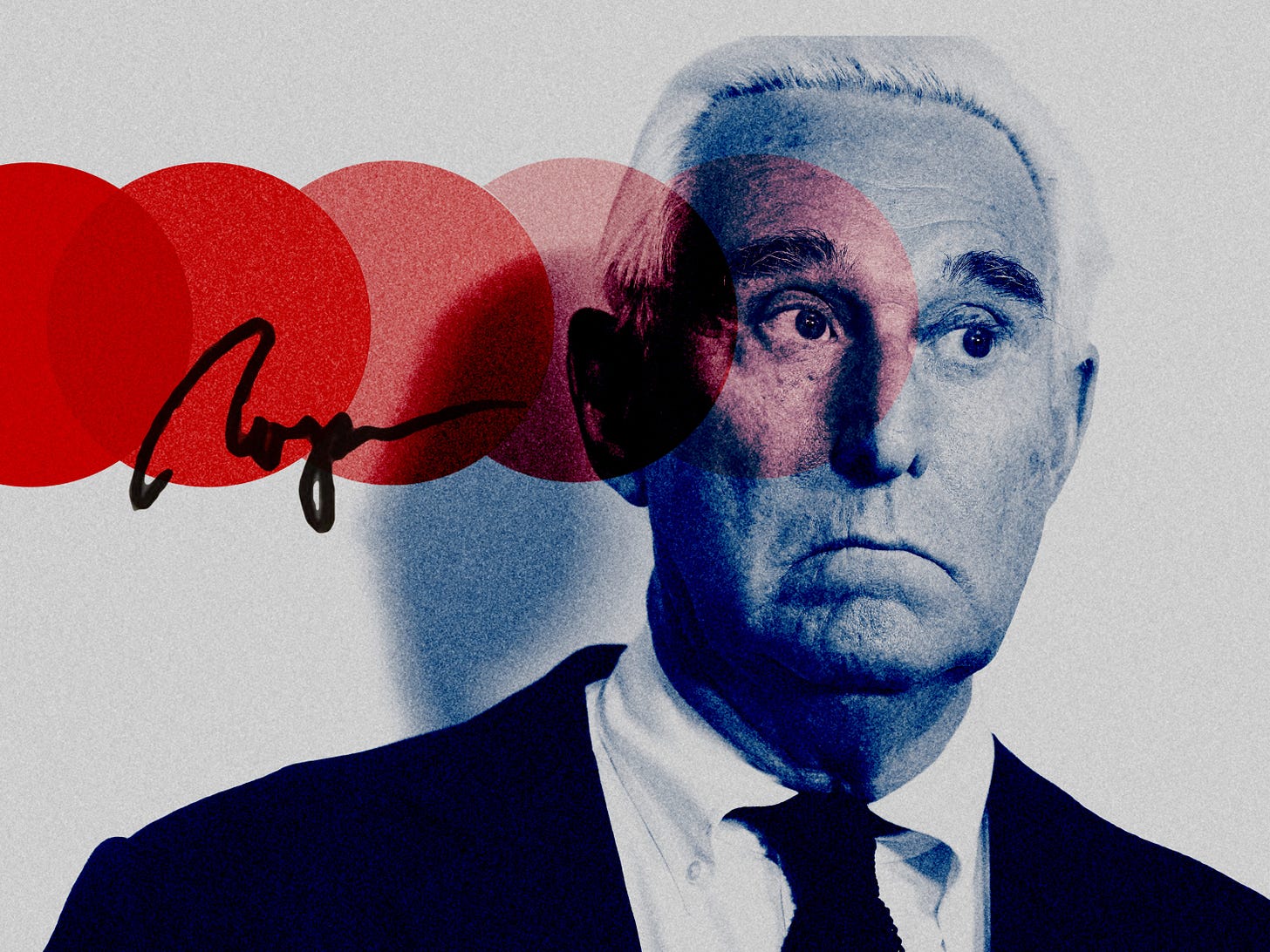What the Stone Indictment Says About Mueller's Investigation
Wait wait wait, back up. You’re saying Roger Stone lied?
On Friday, special counsel Robert Mueller dropped what is perhaps his least surprising indictment yet, charging Roger Stone—longtime Trump adviser, notorious political dirty trickster, fixture of the InfoWars circuit—with making false statements to Congress and the FBI and with attempting to suborn others to perjure themselves as well. Thanks to some ill-advised 2016 tweets and interviews, Stone has long been seen as the closest link between the Trump campaign and Julian Assange, whose organization Wikileaks released Democratic National Committee emails that had been stolen by Russian hackers in 2016. Here’s what we’ve learned from the new indictment against Stone, and what we can expect next.
Stone’s flagrant lies about his ties to Wikileaks
We’ve known for a while that Stone communicated with a Wikileaks “intermediary” during the 2016 campaign, radio host Randy Credico, who tipped off Stone ahead of time about what he then said were key features of upcoming Wikileaks releases. But Stone has long downplayed his communications with Credico—who himself has denied that he was actually close to Wikileaks—as infrequent discussions of information that was already publicly available.
According to the new indictment, Stone lied egregiously about his communications with Credico when he testified before the House Intelligence Committee in late 2017, telling investigators that he “never communicated with his intermediary in writing in any way,” including by text message or by email, and that he never asked Credico to communicate with Wikileaks on his behalf.
Both assertions, Mueller now charges, were laughably untrue. Not only did Stone communicate with Credico almost constantly by both text and email, they actually exchanged more than 30 text messages on the very day that Stone testified they had never communicated by text. And some of those communications were very much requests for information that Stone wanted from Wikileaks: “I am e-mailing u a request to pass on to [Assange],” Stone texted Credico on Sept. 18, 2016, according to the indictment. Stone asked Credico to send an article to Assange, and to ask Assange to send him “any State or HRC email” that would “confirm this narrative.” The indictment alleges that Credico “forwarded the request to an attorney” in contact with Assange.
Stone didn’t go it alone
Taken on their own, Stone’s false statements to Congress—as well as his ham-handed attempts to prevent Credico from contradicting him in his own testimony—wouldn’t necessarily present a problem for Donald Trump. That problem arises elsewhere in the indictment, where Mueller makes clear that Stone’s ties to Wikileaks were seen internally as a valuable part of his contribution to the campaign.
“After the July 22, 2016 release of stolen DNC emails by [Wikileaks],” the indictment reads, “a senior Trump Campaign official was directed to contact STONE about any additional releases and what other damaging information [WikiLeaks] had regarding the Clinton Campaign. STONE thereafter told the Trump Campaign about potential future releases of damaging material by [Wikileaks].”
This apparently proved useful during the second big Wikileaks dump of the year: emails belonging to Hillary Clinton’s campaign chair John Podesta in October 2016.
“On or about October 4, 2016, the head of [Wikileaks] held a press conference but did not release any new materials pertaining to the Clinton Campaign,” the indictment alleges. “Shortly afterwards, STONE received an email from the high-ranking Trump Campaign official asking about the status of future releases by [Wikileaks].” Stone answered that the head of [Wikileaks] had a “serious security concern” but that [Wikileaks] would release “a load every week going forward.”
After Wikileaks released the first load of Podesta emails, the indictment reads, the same Trump campaign official texted Stone: “Well done.”
“In subsequent conversations with senior Trump campaign officials, STONE claimed credit for having correctly predicted the October 7, 2016 release,” the indictment alleges.
What’s to come?
Nothing in Mueller’s latest indictment should be construed as any sort of “smoking gun” against President Trump or any other member of his campaign—not any particular member, anyway. But the indictment does make a few things very clear. One, it shows that at least some senior members of the campaign were eager to coordinate with Wikileaks on the release of emails they felt would be damaging to the Clinton campaign, and that Stone profited internally by stoking the impression that he was a Wikileaks conduit. Two, it shows again that Mueller is already in possession of a trove of internal communications between Stone and other members of the Trump campaign. If any of them previously lied to Congress or to FBI investigators, they’ll be looking over their shoulder for a while.
Third—and perhaps most important—the indictment against Stone shows that trying to predict the final scope of Mueller’s investigation on the basis of speculative timetables is a fool’s errand. Mueller’s almost certainly been sitting on the information in this indictment for quite some time, and seems quite content to operate at his own pace. The wheels of justice grind slowly, as they say, but exceedingly fine.



